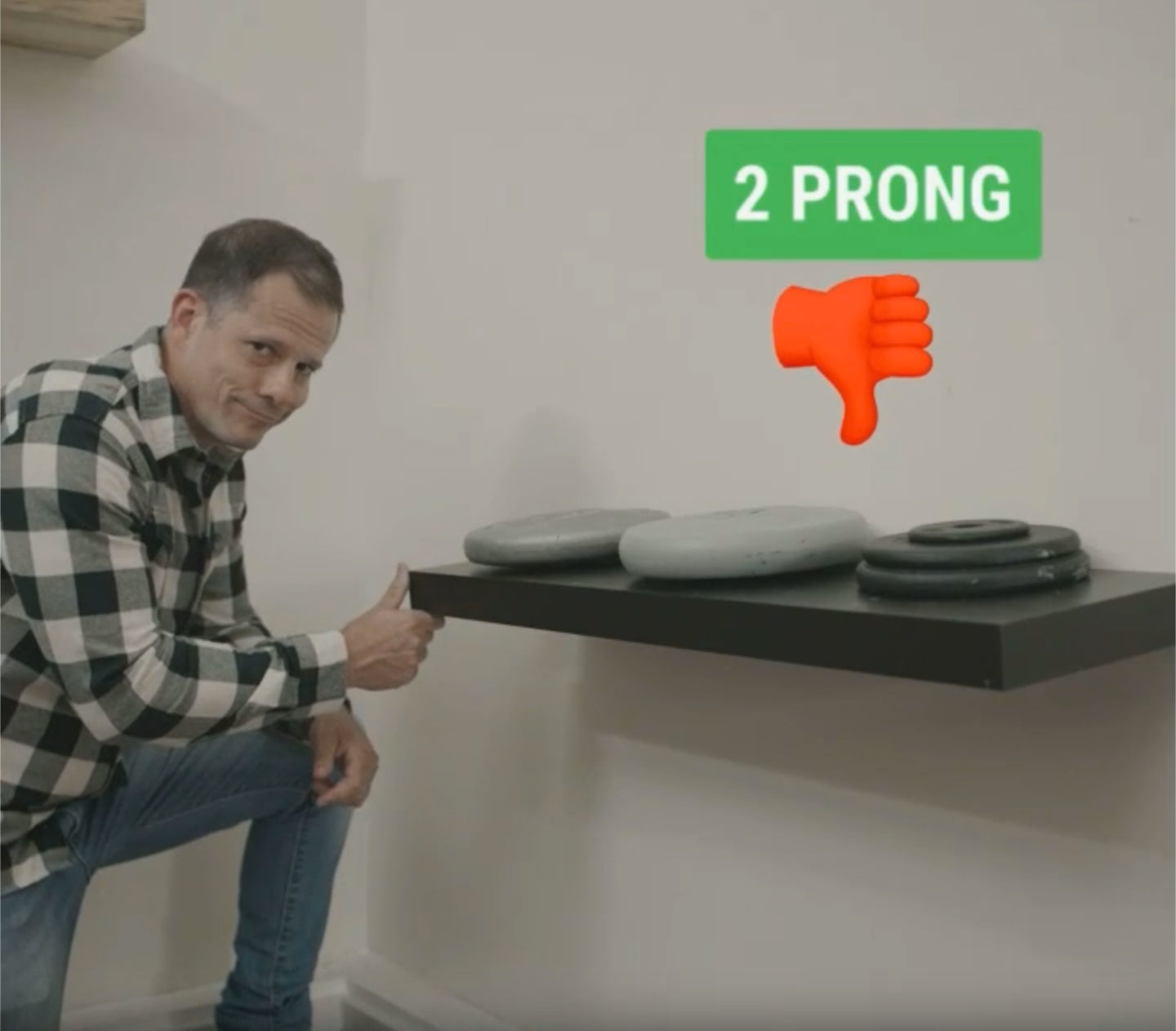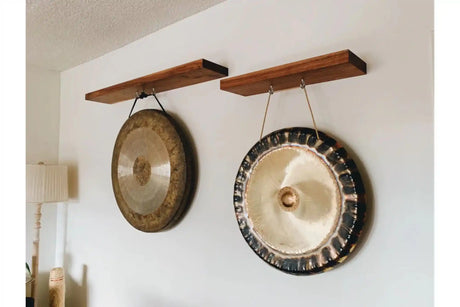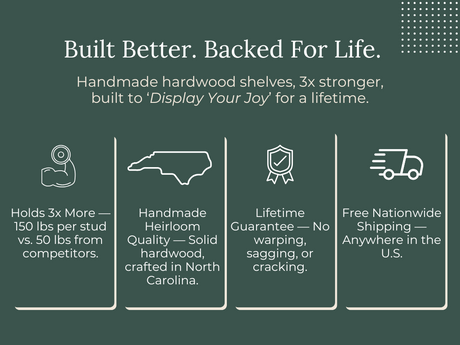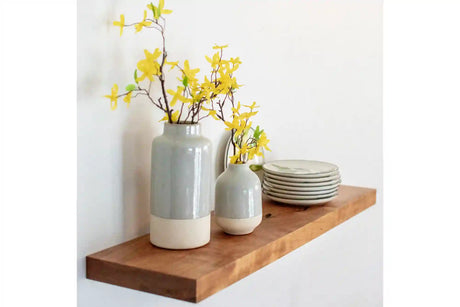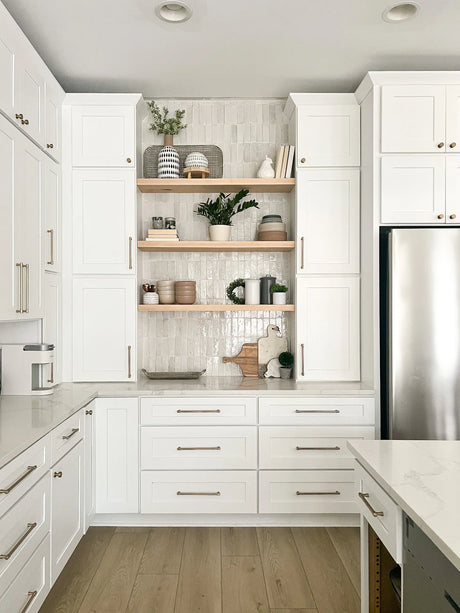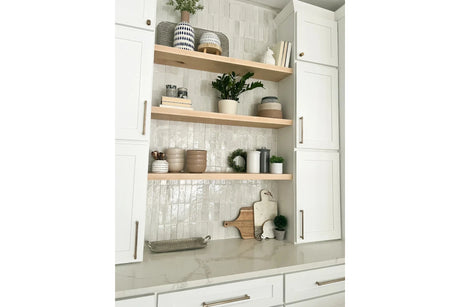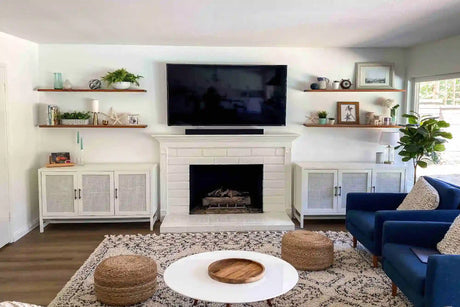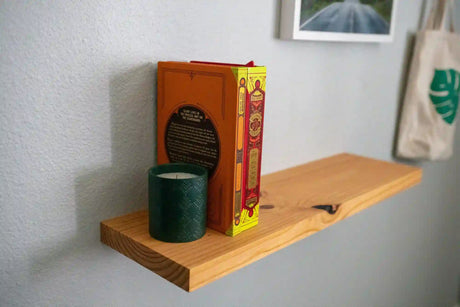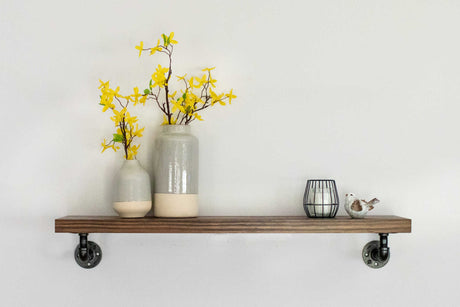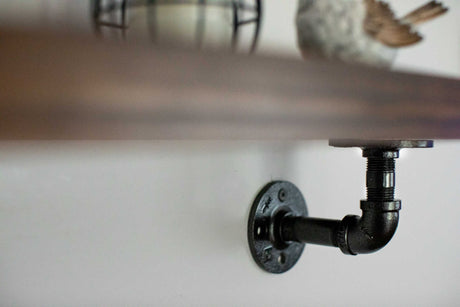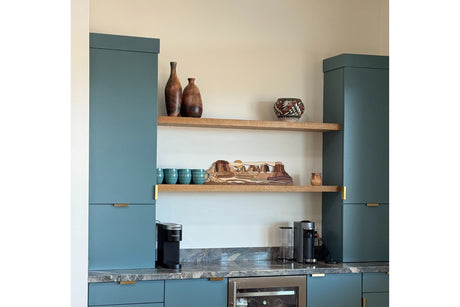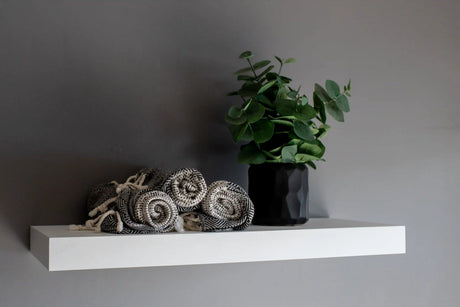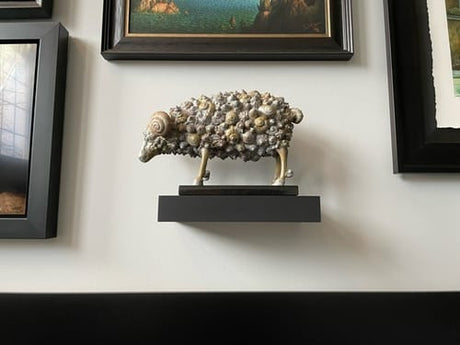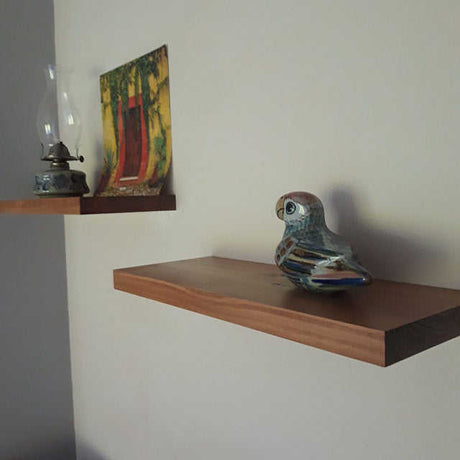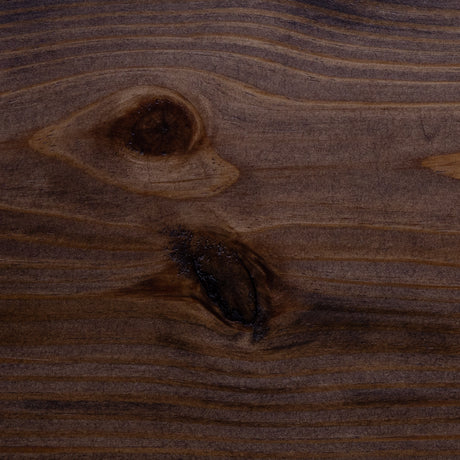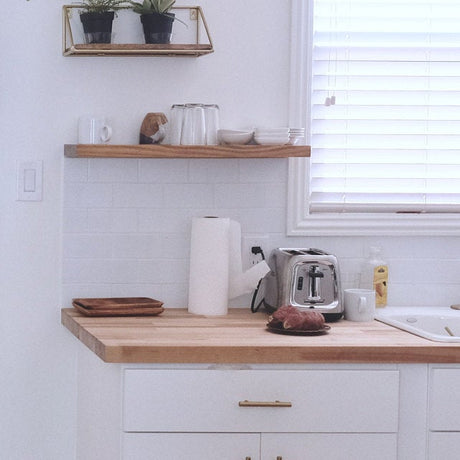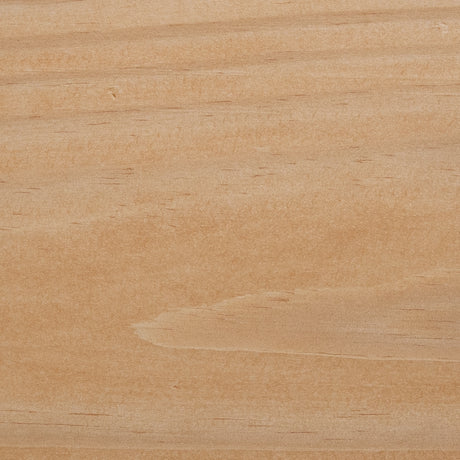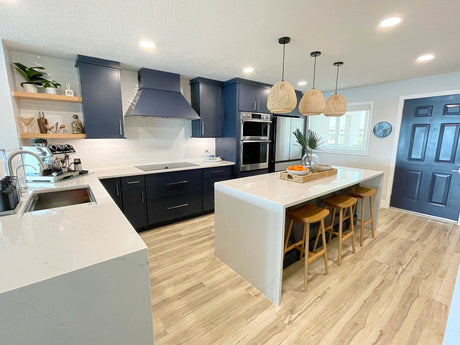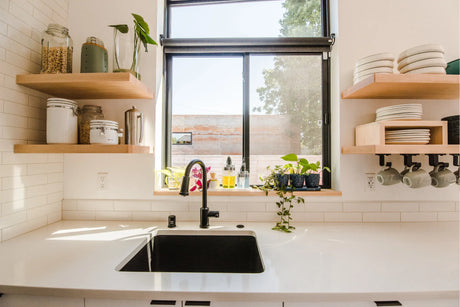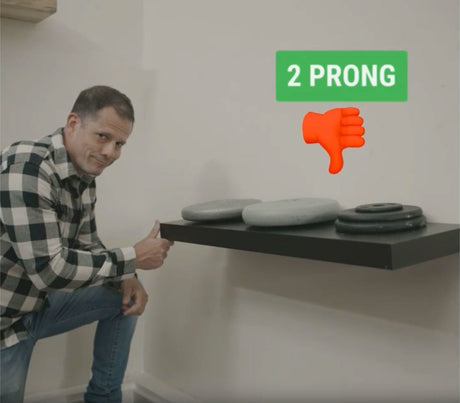Few things kill the vibe of a room faster than a sagging shelf. You start with a clean, crisp floating shelf setup—straight lines, minimalist look—and then one day you notice it’s tilting, wobbling, or pulling away from the wall. Not only does it ruin the aesthetic, it also makes you wonder if the shelf (and everything on it) is safe.
And here’s the thing: when we look at other providers’ floating shelves, the most common complaint is always the same—the bracket just doesn’t hold up to the weight. Shelves look fine out of the box, but once you load them up with dishes, books, or anything substantial, the droop begins. That’s frustrating, especially when you’ve spent good money expecting your shelves to last.
Here’s the good news: sagging shelves aren’t inevitable. In fact, with the right system and a little care during installation, you can avoid it entirely. At Shelf Expression, we back that up with our sag-free guarantee. But since you might be wondering how sagging happens in the first place—and what makes our shelves different—let’s walk through it.
Shop Our Floating Shelves That DON'T Sag
Why Standard Brackets Fail
A lot of floating shelves on the market use what’s called a “prong bracket.” On paper, it looks clean: you screw a rod into the wall, slide the shelf over it, and presto—floating shelf. The problem is that those prongs only go a few inches deep, and all of the weight is pulling downward on them over time.

That means:
- Shelves start to tilt forward under heavy loads.
- Brackets loosen and wiggle with everyday use.
- Eventually, you’re staring at the dreaded droop.
For lightweight knickknacks, prongs might hold up for a while. But if you want a serious shelf—something that can support dishes, books, heirlooms, or even just daily wear and tear—prong brackets just don’t cut it.
Why We Use the Hovr Bracket
That’s where the Hovr Bracket System comes in. Instead of relying on short prongs, Hovr uses a two-piece interlocking aluminum bracket (a “male” and a “female” side). One mounts to the wall, the other into the back of the shelf. When you slide them together, the shelf literally locks onto the wall across its entire length.
Here’s what that means in practice:
- Strength: Hovr holds up to 150 lbs per stud. With multiple studs, you’re looking at hundreds of pounds of capacity.
- Stability: Because the weight is distributed evenly, sagging isn’t an issue.
- Longevity: No wiggling, drooping, or slow failure over time.
This is why we only use Hovr for every floating shelf we make. If we’re going to put our name—and our Shelf Expression Promise—on it, it has to hold up for life.
'Strength: Hovr holds up to 150 lbs per stud. With multiple studs, you’re looking at hundreds of pounds of capacity.'
(If you want to geek out more on how Hovr works, check out their official guide, here.)
When Sagging Still Happens
Now, let’s be honest: even the best bracket in the world can’t completely cancel out a bad wall. Sometimes sagging isn’t the shelf’s fault at all—it’s the surface it’s mounted on.
- Uneven walls: If your wall isn’t perfectly flat, the shelf might pull away in spots and look like it’s sagging.
- Bowed studs: Older homes sometimes have studs that aren’t straight. This can cause tiny gaps or alignment issues.
- Leveling mistakes: Even a small measurement slip during installation can make a strong shelf look crooked.
We’ve seen it all, and the key takeaway is this: sagging usually isn’t the bracket. It’s the conditions it’s being installed into.
How to Prevent (and Fix) Sagging
The good news is that most sagging issues can be avoided or fixed with a little extra care.
-
Check your wall first. Use a level to see if your wall is uneven before you start.
-
Use shims if needed. For walls that bow or dip, small shims can close gaps and keep the shelf flush.
-
Always find studs. Drywall alone can’t hold up much. Hovr brackets need to be anchored into studs for full strength.
-
Double-check your measurements. Measure twice, drill once. A slight tilt during installation will look like sagging even if the bracket is solid.
-
Tighten connections. The Hovr bracket locks in, but if the set screws aren’t tightened, you can still get wiggle.
Follow those steps and you’ll be looking at straight, solid floating shelves that last a lifetime.
The Shelf Expression Promise

We don’t just talk about strong shelves—we guarantee them. The Shelf Expression Promise means:
- Sag-Free Guarantee: Built with Hovr, our shelves are designed to stay level for life.
- Lifetime Replacement: If a shelf ever warps or cracks, we’ll replace it.
- 30-Day No-Hassle Exchanges: If it’s not the right fit, we'll work to make it right.
When you buy a floating shelf from us, you’re not just buying wood and brackets—you’re buying peace of mind.
Wrap-Up
A sagging shelf doesn’t just look bad, it makes you worry about what’s sitting on it. The good news? You don’t have to settle for droopy shelves or “good enough” brackets. With the right system (hello, Hovr) and proper installation, you can enjoy rock-solid floating shelves that stay perfectly level for as long as you own your home.
So instead of stressing about sagging, you can focus on the fun part: styling your shelves with the things that bring you joy.
Ready to put the sagging worries behind you? Check out our custom floating shelves —handmade, guaranteed, and built to stay straight for life.

